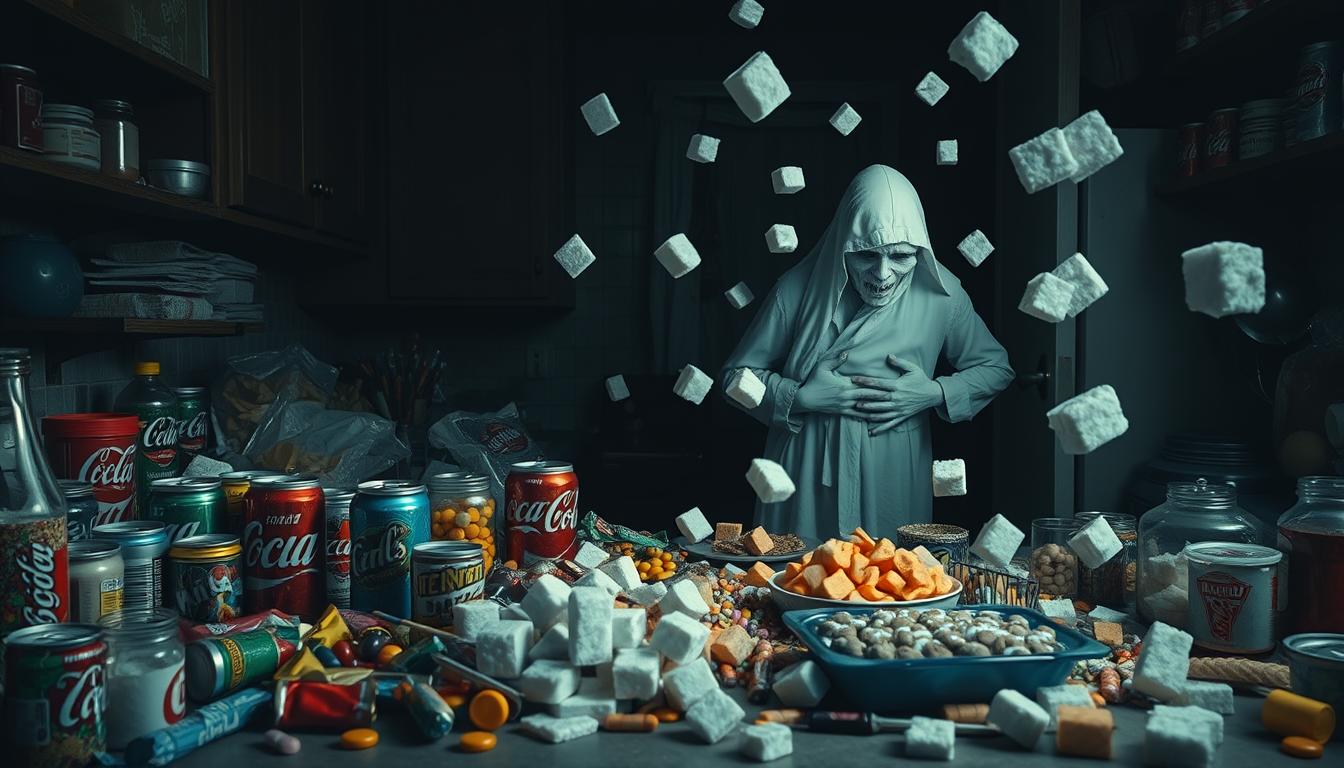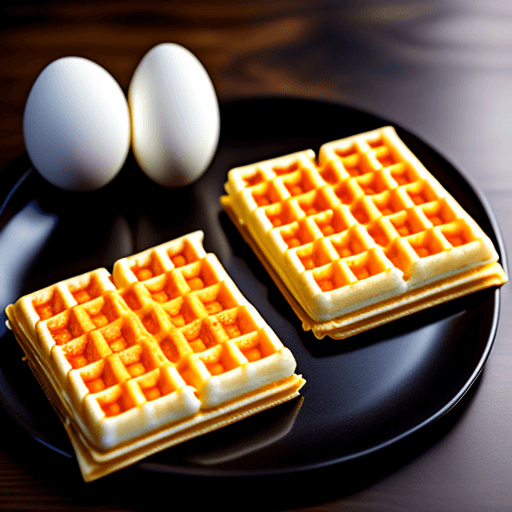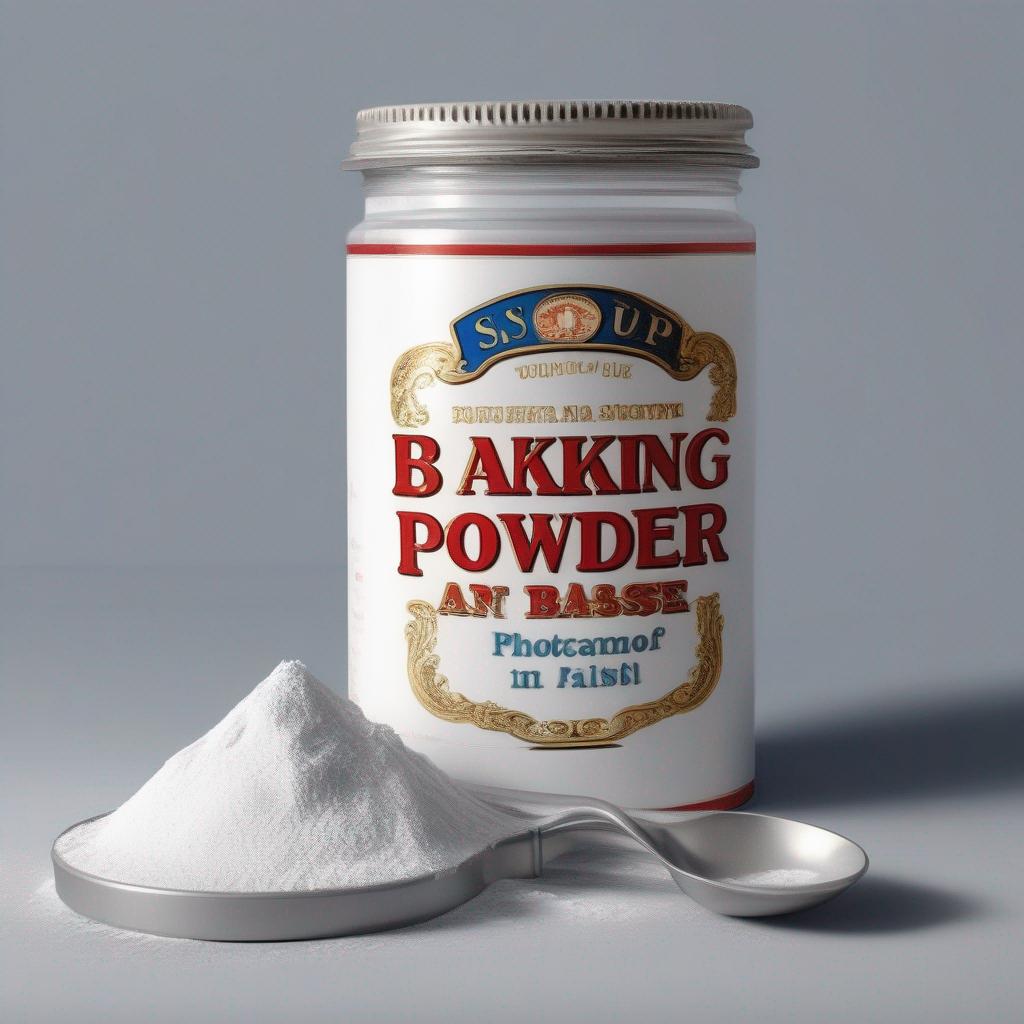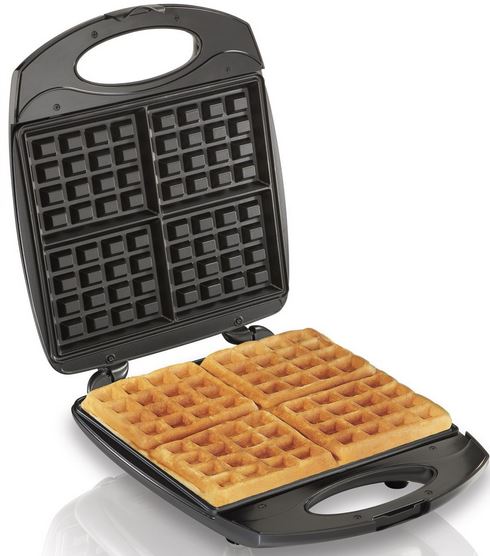When it comes to the perfect waffle, there’s really only one way to go: thick or thin? The debate has been raging for years and I’m here to help you make an informed decision on whether thick or thin batter should be used when making your next morning waffle.
To make cleaning up easier afterward, I recommend you get a waffle maker that uses removable plates.
Whether you prefer light and fluffy American style waffles or rich and full-bodied Belgian waffles, understanding both sides of the argument can provide insight into which option is best suited for your palate. So let’s examine ‘Should Waffle Batter Be Thick or Thin?’
Table of Contents
- 1 Definition Of Waffle Batter
- 2 Different Types Of Waffles
- 3 Consistency Of The Batter
- 4 Pros And Cons Of Thick Batter
- 5 Pros And Cons Of Thin Batter
- 6 Best Tools For Making Waffles
- 7 Proper Measuring Techniques For Waffle Batter
- 8 Temperature Considerations For Optimal Results
- 9 Ways To Thicken The Batter
- 10 Ways To Thin The Batter
- 11 Add-Ins To Enhance Texture And Flavor
- 12 Storage And Reheating Tips
- 13 Ways To Serve Waffles
- 14 Recipes For Sweet And Savory Waffles
- 15 Common Mistakes In Making Waffles
Definition Of Waffle Batter
Determing the thickness of your waffle batter is the starting point for making waffles. The recipe usually consists of some combination of flour, eggs, milk, oil and baking powder. Often times it also includes additional ingredients such as sugar and salt to add flavor and sweetness. To make waffles with your own homemade batter you will need either a waffle maker. If you want to make an extra thick waffle with a thickness of 1.5 inches or greater, then you will have to purchase an extra thick waffle maker.
When preparing the batter it’s important to mix all the ingredients together properly in order to create an optimal texture for the finished product. Typically most recipes call for whisking together wet ingredients like egg whites and whole eggs separately before adding them into the bowl with other dry components like flour, sugar, and salt. This ensures that everything is evenly distributed throughout the mixture. Depending on the type of waffle being made, batters can range from thin crepe-like consistency to thick cake-like mixtures.
Different Types Of Waffles
When it comes to waffles, there are many different types that vary in flavor and texture. Belgian-style waffles are perhaps the most popular type of waffle, made with a light egg batter and leavening agents such as baking powder or yeast. I really love eating Liege waffles because they are a denser version of the Belgian-style waffle and are made with a doughy brioche batter containing pearl sugar for added sweetness and crunchiness. Buckwheat waffles are also common because they are very nutritious, often served savory with vegetables or cheese, and sometimes sweetened with honey. Potato waffles were invented in Scotland during World War II when food was scarce; these are usually savory though they can be topped with maple syrup or applesauce. Also pandan-flavored waffles have been gaining popularity due to their fragrant aroma and perky green color—they’re typically served plain so you can enjoy the subtle flavors without any distractions.
Consistency Of The Batter
When it comes to waffle batter, the desired consistency can vary greatly. Some people like their batter runny and drippy while others prefer something more lumpy and gloppy. There are pros and cons for both thick and thin batters:
• Thick Batter Pros: A thicker batter makes a denser waffle that is often crispier on the outside and chewier in the middle. The added thickness also prevents spillage when pouring into a waffle iron or griddle.
• Thick Batter Cons: If too thick, a waffle may be gummy or soggy instead of crispy. It’s harder to spread evenly across a griddle without causing spatters with thick batter as well.
• Thin Batter Pros: Runnier batters tend to bake faster and spread out better than thicker ones making them ideal if you’re looking for light and airy texture. They are easier to work with since they won’t stick together as much when mixing multiple ingredients either.
• Thin Batter Cons: Too thin of a batter will result in waffles that don’t cook properly resulting in uneven cooking times or overly browned sections. Also, because thinner batters lack structure, they are prone to running over the side of your griddle or off your spoon thus creating an additional mess to clean up afterwards.
Pros And Cons Of Thick Batter
When it comes to waffle batter, thick or thin is a matter of preference. Thick batter produces heartier and crispier waffles than thin batters, but there are some drawbacks you should consider before deciding which type of batter to use. Let’s take a look at the pros and cons of using thick batter for your next batch of waffles:
| Pros | Cons |
|---|---|
| Greater texture variety in the finished product due to more air pockets created by thicker batter | Heavier and denser-tasting waffles compared to thinner batters |
| Less likely to stick in the waffle iron due to higher viscosity levels in the mix | More difficult to spread evenly across grids when cooking, resulting in unevenly cooked waffles |
| Strong flavors from ingredients like spices come through better with a thick batter |
Thick batters can be tricky to work with if you’re not used to them. To get the best results, make sure you follow recipes closely and measure out all ingredients precisely. You may also want to add an extra egg or two for a fluffier texture. Also don’t overmix your batter as this will decrease its volume, making it too runny. Also try experimenting with different types of liquid such as almond milk or coconut cream instead of regular cow’s milk – they both produce great results! With these tips, your thick-batter creations will turn out delicious every time!
Pros And Cons Of Thin Batter
Thin batter can offer a unique texture and flavor for waffles. The consistency of thin batter allows it to be spread more easily, giving each waffle an even thickness throughout. Here are some pros and cons that come with using thin batter:
- Texture: Thin batters result in lighter, crispier waffles which may add to the overall experience of eating them.
- Consistency: As mentioned before, thin batters can be spread evenly across the surface of the waffle maker making the final product much easier to achieve than thicker ones.
- Flavor: Because they cook faster than thick batters, thin batters tend to have less time to absorb flavors from other ingredients such as fruits or spices resulting in milder tasting waffles.
- Reheating: Since thin-batter waffles are cooked at higher temperatures and generally contain fewer calories, they keep better when reheated compared to their thicker counterparts.
Best Tools For Making Waffles
When it comes to making the best tasting waffles, you should use a dedicated waffle maker because they are designed specifically for creating perfect waffles every time. They typically come with two waffle plates hinged together that allow you to make either one 7 inch round waffle or four 4.5 inch wide square shaped waffles at once.
The Hamilton Beach 26031 flip waffle maker with removable ceramic coated plates will make you an evenly baked and perfectly formed 7 inch round, 1 inch thick Belgian waffle every time.
The All Clad Digital Gourmet can make you four 4.5 inch wide, 1 inch thick square shaped Belgian waffles each time.
The All Clad 99012GT or Breville BWM520XL can make you one 7 inch round, 0.5 inch thick thin, American style waffle at a time.
The Black and Decker G48td 3-in-1 has reversible waffle and griddle plates that can make either four 4 inch wide square-shaped thin, American style waffles at a time with one side of the plates and bacon and eggs with the other.
For those who don’t have a lot of counter space, there are smaller models such as the Dash waffle makers that can make one 4 inch diameter round waffle at a time.
If you don’t need perfectly formed waffkes, there are electric griddles that can be used for both pancakes and waffles. If you prefer to cook your waffles on the stovetop, non-stick pans work well too.
Proper Measuring Techniques For Waffle Batter
Accurate measurements are important to make sure your waffle batter is just the right thickness. The amount of ingredients needed for a thin or thick consistency can vary, so it’s critical to measure correctly. Here are some measuring tips and techniques that will help you achieve the desired texture:
| Measurement | Amount Needed | Technique |
|---|---|---|
| Flour | 1 cup | Use spoon-and-level method |
| Salt | ¼ teaspoon | Sprinkle over top with fingers |
| Baking powder | ½ teaspoon | Level off with back of knife |
| Milk | 2/3 cup | Pour into side of liquid measuring cup |
| Egg | 1 large egg | Crack shell against flat surface before adding |
Temperature Considerations For Optimal Results
When measuring the ingredients for waffle batter, it is important to remember that the consistency of your batter will have a direct impact on how successful the final product will be. While some recipes may call for a thicker or thinner batter, understanding temperature considerations and having control over heat regulation during baking are key factors in creating an ideal end result.
Knowing the right cooking time and preheating oven temperature can help you achieve perfectly cooked waffles with perfect texture every single time. Thicker batters require longer cooking times than thin batters because they need more heat energy to cook through evenly. Therefore, when using a thick batter it is recommended to begin by preheating your oven at temperatures no lower than 375°F (190°C). When dealing with a thin batter, however, precooking temperatures as low as 350°F (177°C) should suffice.
It’s also important to note that proper baking temperatures vary depending on what type of waffles you’re making—Belgian or Classic-style. Belgian waffles tend to require higher preheat temperatures to allow them to rise properly while classic-style waffles bake best between 325–350°F (163–177°C). Knowing these details prior to beginning any recipe can save you from ending up with either undercooked or overcooked results.
Ways To Thicken The Batter
When it comes to waffle batter, the desired consistency is typically a thick one. Thickness can be achieved in several ways, which are all relatively straight forward and easy to do. Here are three of them:
- Add an extra egg white or two to your recipe; this will increase the protein content and help thicken the mixture.
- Increase the amount of baking powder or baking soda you use in your recipe; these ingredients provide lift, resulting in thicker batters when used in the right amounts.
- Incorporate melted butter into your batter; this adds fat, as well as flavor, while helping create a thicker consistency.
Ways To Thin The Batter
Having discussed the various ways of thickening waffle batter, it is important to also consider thinning options. Thin batters are often desired for a light and crispy texture. Achieving this consistency requires reducing liquids or thinning them out, which can be done in several ways.
| Technique | Description |
|---|---|
| Reduce Amount of Liquid | Use less liquid than the recipe calls for when making your waffle batter. This will result in a thicker batter that may need additional thinning. |
| Dilute with Water | Add water to the mix to make it more fluid without changing its flavor profile too drastically. The amount needed depends on how much thinner you want your batter to become. Adding too much water could prevent the ingredients from properly combining together. |
| Substitute Milk/Buttermilk with Water | Instead of using milk or buttermilk as per usual, try diluting these liquids even further by replacing some portion of them with water instead. This will reduce their thickness while still imparting some level of creaminess into the final product. |
Add-Ins To Enhance Texture And Flavor
When it comes to creating the perfect waffle batter, texture, and flavor are key. I like making my batter even tastier and more enjoyable to eat by adding some of these add-ins: blueberry, cinnamon, chocolate chips, banana slices, and pecans. Each one will bring something unique to the mix!
Blueberries can be added fresh or frozen into the batter for a burst of fruity sweetness. They’ll also give your waffles a beautiful purple hue when cooked. Cinnamon is another great option that adds warm flavors like nutmeg, clove, and allspice – plus its aroma is heavenly when baking in the kitchen. It’s an ideal choice if you’re looking for a bit of spice in every bite.
Chocolate chips bring delicious cocoa notes while providing a crunchy texture throughout each serving. Plus they look great as garnishes on top of freshly made waffles too! If you want something naturally sweet with no sugar added then try adding sliced bananas instead. The natural sugars from this fruit caramelize nicely when cooking making them extra flavorful and irresistible! Last but not least are pecans which offer rich buttery tones with a slightly smoky edge – plus their crunch provides an excellent balance between softness and crispiness too!
Storage And Reheating Tips
Whether your waffle batter is thick or thin, it’s important to store and reheat them properly so they stay crispy. Here are some tips for storing and reheating waffles that will help maximize their longevity.
When storing waffles, make sure you place them in an airtight container before refrigerating them. This will keep the moisture out and prevent sogginess. Waffles can also be frozen after cooking if you want to save them for later use. To do this, simply wrap each waffle individually with plastic wrap or wax paper and place it inside a freezer-safe bag or container.
When reheating waffles, there are several methods you can choose from depending on what texture you prefer. If you’re looking for a crispier texture, then try warming up the waffle in the oven at 350°F (180°C) until heated through; alternatively, if you desire more of a fluffy interior, microwave the waffle according to its instructions instead. For best results when microwaving, turn the waffle halfway through heating time so that all sides get evenly warmed.
Ways To Serve Waffles
When it comes to waffles, the perfect batter should be thick enough to hold its shape but thin enough for the iron plates to create a crisp exterior. But once you have achieved that ideal consistency, the real fun begins! Whether you’re looking for something sweet or savory, there are endless ways to serve up your waffle creation.
I have an affinity for all things sugary so I like topping my golden-brown Belgian Liege Waffles with creamy ice cream and drizzling it in syrup is always delightful. Sometimes I like adding poached fruit like peaches, apples or pears; this will give the dish some extra texture and sweetness without overpowering it. Of course, no one can resist classic maple syrup, which pairs perfectly with any type of waffle. Other toppings such as whipped cream and chocolate shavings make great accompaniments too.
On the other hand if you’re craving more of a savory treat then buttery fried chicken on top of a fluffy cornbread waffle can really hit the spot. Feeling adventurous? Try sprinkling some cayenne pepper onto your meal – trust us when we say that little bit of spice will definitely add another layer of flavor! Adding some melted cheese also gives it that extra oomph so don’t forget about that either.
Recipes For Sweet And Savory Waffles
The perfect waffle batter has a smooth, creamy consistency that is neither too thick nor too thin. With this in mind, it’s time to look at some delicious recipes that can help you make the most out of your waffles. Whether you’re looking for sweet or savory options, there are plenty of vegan, paleo, and gluten-free recipes available.
Start off with something simple like a classic buttermilk waffle recipe. These fluffy treats will bring wholesome goodness to your breakfast table without any added sugar. If you’re feeling adventurous, try adding fresh blueberries or strawberries to the mix before cooking them up on the griddle. For a more indulgent option, why not top your waffles with maple syrup and whipped cream?
For those who prefer savory over sweet, you won’t be disappointed either! Try experimenting with different herbs and spices such as rosemary or garlic powder to create an irresistible flavor combination. Top it all off with bacon bits or feta cheese for an extra kick!
Common Mistakes In Making Waffles
Making waffles can be a fun experience if you know what you’re doing, but it can be easy to make mistakes. Here are some of the most common errors people make when making their own waffles:
-
Over-mixing the batter – If you mix your batter too much, it will become dense and gummy, resulting in soggy waffles. Mix just until all ingredients are combined for light and fluffy waffles.
-
Underestimating cooking time – Be sure to set aside plenty of time to get your waffle iron hot enough to cook through the batter. An undercooked or raw center results in an unpleasant texture and taste.
-
Not preheating the iron – Preheating your iron ensures even browning throughout each side of the waffle. Make sure that your temperature setting is accurate for the perfect golden-brown color on both sides.
- Not greasing properly – Grease your heated iron before adding batter so that the mixture doesn’t stick when cooked. Use oil or butter lightly brushed onto the surface with a pastry brush or paper towel; don’t spray aerosol grease as this can cause uneven browning due to high heat spots created by overgreasing certain areas.




